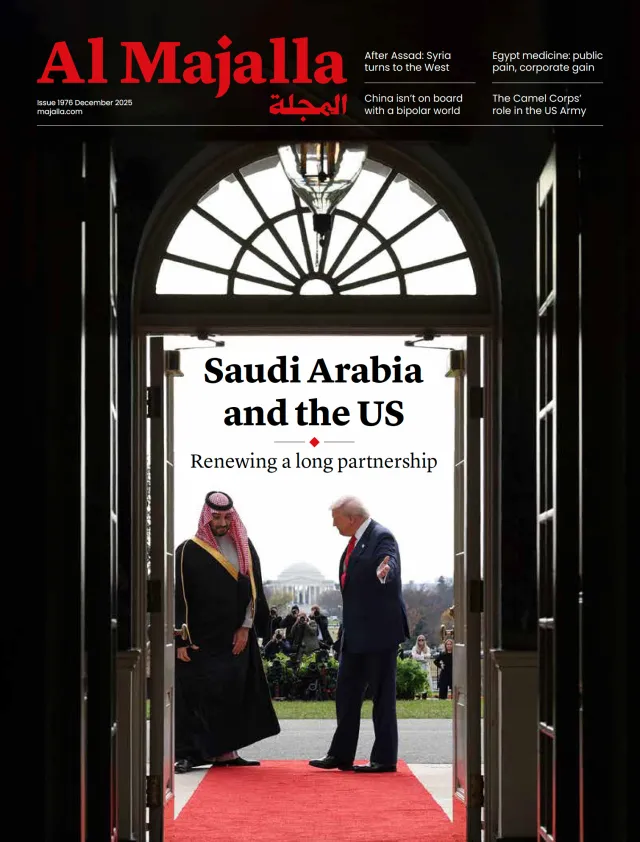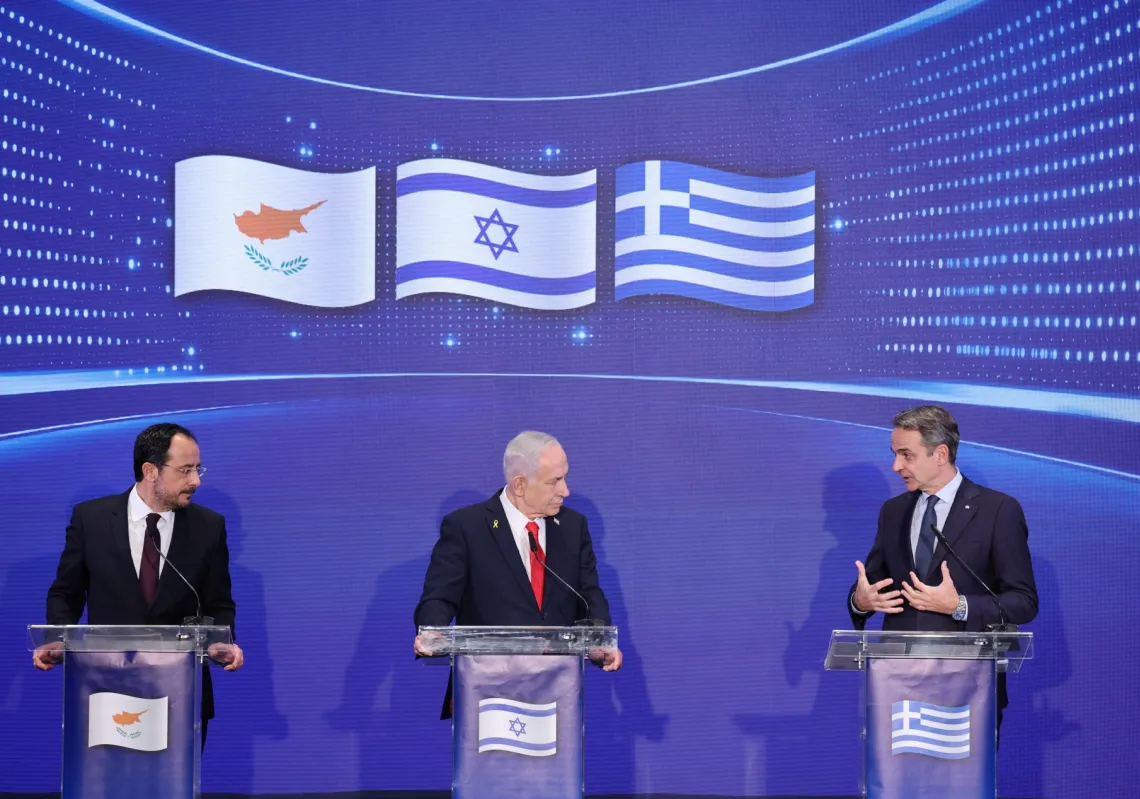Instead of a flag, US President Donald Trump ran up a flagpole. The erection of two new flag poles at the White House on 18 June provided Trump with the opportunity to speculate on his policy toward Iran in the aftermath of Israel’s attacks on the country.
During a rambling interaction with the press by one of the new poles—with workers in hard hats standing behind him—Trump addressed the issue of Iran. “The next week is going to be very big, maybe less than a week, maybe less,” he pontificated in a somewhat random fashion while indicating he was still willing to talk with Iran about its nuclear programme.

The following day, a statement read out by the White House Press Secretary quoted Trump as saying he would “make my decision whether or not to go within the next two weeks.” That was a deliberate deception, as an order had already been made that would see, two days later, American B2 bombers fly 37 hours round-trip from their bases in Missouri to drop multiple 30,000-pound explosives on Iranian nuclear sites.
This American trickery followed Israeli deception, in which Israel attacked Iran’s nuclear programme while Iran was engaged in ongoing talks with the United States—talks that included a meeting scheduled for two days after the assault.
Examples in history
But just how common are such deceptive diplomatic behaviours by states? The answer is not common at all, and perhaps this example offers further evidence of a growing movement since the end of the Cold War away from long-established norms in international relations.
Deception to fool one’s enemy is certainly nothing new. Indeed, there are countless examples across human existence of just such behaviours. The important distinction, though, is that the historical examples of deception—with a few exceptions—tend to occur during an ongoing conflict between distinct parties or, over the last few centuries, between nation-states.
The most famous example of deception during a conflict dates back thousands of years and supplied a recurrent concept in English: the Trojan horse. Greek armies, engaged in a war with Troy, appeared to vacate the battlefield, leaving behind a large wooden horse, seemingly as a peace offering to their Trojan enemies. Of course, hidden inside the horse were Greek soldiers who later emerged to defeat the Trojans and seize their city.
Earliest known depiction of the famous 'Wooden Horse' of the Trojan War, on Mykonos Terracotta Vase (Pithos) - 670 BC, found at Mykonos island, Cyclades, Greece.
Neck of pithos shows descent of Greeks from wooden horse. His hooves rest upon little wheels, and in body and neck of... pic.twitter.com/LYhhmS6R3Y
— Archaeo - Histories (@archeohistories) January 9, 2024
A recent, prominent example that has made its way into popular culture through stage and film is Operation Mincemeat, a World War II operation. British intelligence attempted to mislead Nazi Germany over the intended invasion of Sicily in 1943. It did so by dropping the body of a dead tramp wearing the military uniform of an officer off the coast of Spain with fake plans designed to convince the Germans that the real target for invasion was Sardinia and not Sicily.
A year later, the Allies similarly tried to fool the Nazis into believing that the long-awaited invasion of France would come at the Pas de Calais and not on the beaches of Normandy, as occurred on June 6, 1944.
But what about diplomacy through deception? The very nature of diplomacy should seemingly mitigate the need to deceive one’s opponent, thereby ensuring credibility during negotiations. After all, why would a government engage in diplomatic discussions with a rival if it were done to provide camouflage for an attack? Perhaps then, it is not surprising that such examples appear rare; the historical pattern suggests that the countries which most readily engage in diplomatic deception tend to be authoritarian in nature.
A leading example is Nazi Germany, which regularly flouted norms established over previous centuries and carried out mass murder on an industrial scale during the Holocaust. Before the outbreak of hostilities in 1939, the Nazis used diplomatic efforts to engage in deception. The Munich Conference in 1938 stands out as a key instance of such practices and one that continues to be referenced regularly in the 21st century.

Famously, at Munich, the subject was Czechoslovakia and a part of the country known as the Sudetenland, where most of the inhabitants spoke German. The Nazis under Adolf Hitler sought to annex the region as part of creating a greater Germany. Fearing a European War, the leaders of France and the United Kingdom met with Hitler at Munich in late September 1938. Ignoring the government of Czechoslovakia, an agreement was reached to hand over the Sudetenland to Germany; Hitler promised that Germany had no more territorial ambitions.
Appeasement, as we know, failed to quell Nazi aggression. Months before the meeting at Munich, Hitler had approved plans to invade Czechoslovakia, along with wider military preparations for a larger European conflict. In March 1939, Germany occupied the rest of Czechoslovakia.
Hitler had one more diplomatic trick to play in August 1939 as the Nazis prepared to invade Poland. His government signed a non-aggression pact with Joseph Stalin and the Soviet Union, which included a secret agreement between the two countries to divide Eastern Europe. Hitler, however, saw the agreement as merely a temporary measure as Nazi ideology had long believed in a greater Germany that would encompass lands in the east, including parts of the Soviet Union.















